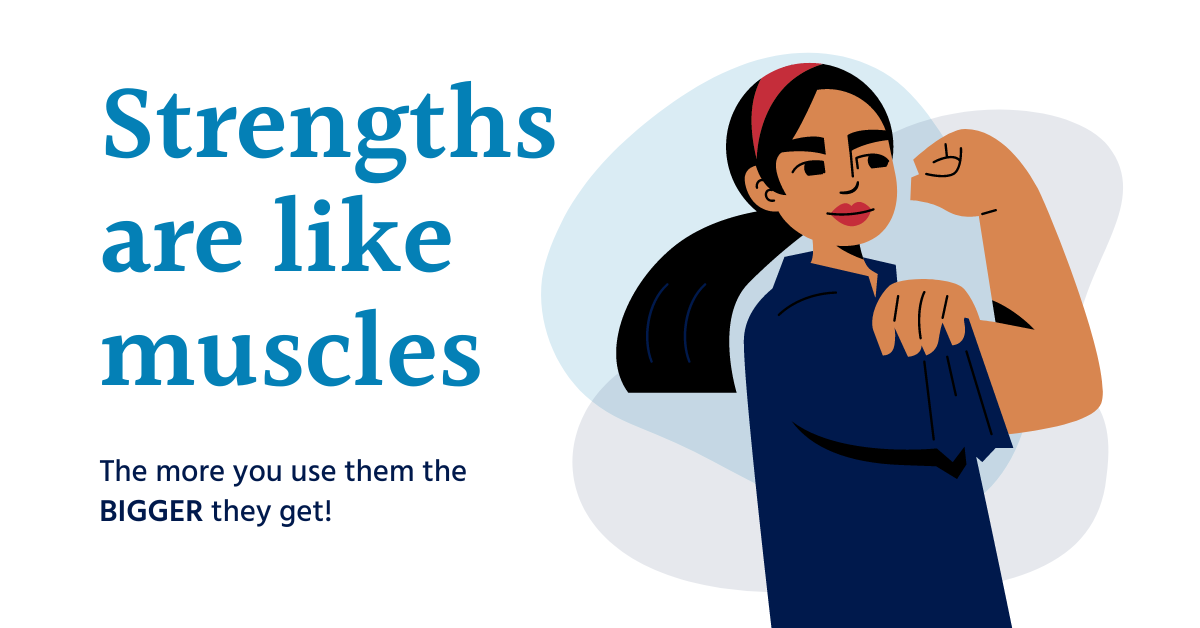
How do you focus on using your strengths?
You may have read through your CliftonStrengths profile, felt some warm fuzzies, and got some positive validation about your unique natural talents. One of the questions I always get asked is, ‘How do I use these strengths in my day-to-day work?’.
The evidence around focusing on our strengths is a no-brainer – we should all be doing it! (check out my blog about the science behind “What is CliftonStrengths?” for some of the science behind strengths).
Individuals who focus on using their strengths are:
-
- Three times as likely to report having an excellent quality of life
- Six times as likely to be engaged in their jobs
- Increase their productivity by 7.8%
Teams who focus on using their strengths:
-
- Achieve more daily
- Look forward to going to work
- Increase profit by up to 29%
- Increase engagement by up to 7%
- Have more positive than negative interactions with colleagues
- Treat stakeholders and customers better
- Have more positive, creative and innovative moments.
- Achieve more daily
Strengths are like muscles. The more you train them, the stronger they get.

It’s simple – a 3-step process.
1. Building self-awareness
2. Deepening your appreciation of your power and edge
3. Applying your strengths in day-to-day activities
Awareness
First, you need to become more self-aware of your talent themes. These one-word labels describe a deep ‘bucket of talent’. They describe the ways of thinking, feeling and behaving in the world around you.
A word of caution – sometimes people can misunderstand the deeper meanings behind the ‘one-word English labels’ given for the CliftonStrengths talent themes (I often wonder whether Germans may have better translations for them!) – some common examples of talent themes that are often misunderstood are Empathy, Strategic and Communication – take a look at these short 1 minute videos if you want to find out a bit more about what these talent themes actually mean!
Appreciation
Secondly, you must learn to deeply appreciate this talent theme’s unique power and edge in your life.
It’s not merely ‘oh yeah, that sounds like me’ (which many people get to – yes, that’s validating, but it doesn’t get to the deeper appreciation of how these talents help you in your life and work). It’s a deeper appreciation, like: ‘Oh wow, this is the superpower I have that makes me successful in what I do and serves the world around me!’. This comes from reflecting on past successes where you’ve noticed that talent theme in action. It’s great when you can do this ‘appreciation’ stage with others who know you well – they may well recognise things in you that you may take for granted yourself.
Application
Thirdly, you think of ways you can intentionally apply that talent – I call these ‘strengths muscle press ups’. Your report will have bullet-point suggestions for ‘actions to maximise your potential. which may prompt you to think of some good ideas. I often ask clients to think of:
-
-
-
-
- What’s coming up in the next 24 hours of your life where you could intentionally apply this strength? (e.g. Arranger – I’m going to colour-code my Outlook calendar!)
- In what ways could you start using this theme more intentionally in the next few weeks or months? (e.g. Strategic – I’m going to think of three possible alternative scenarios that this project might get delivered in time.)
-
-
-
Gallup refers to this whole process as “Name it – Claim it – Aim it”. I call it a strengths muscle press up!

Managing our talent themes – Tame it!
In focusing on our strengths, we also want to be aware of their potential blind spots and learn how to be aware of and manage these.
Our strengths have beautiful things about them, which help us live to our potential and serve the world around us. But there also can be a bit of a ‘dark side’ to our natural talents – these can be our blind spots or characteristics of our talent themes that may come out to play when we’re under stress or trying circumstances. Or it might just be how other people perceive us from time to time (so they’re really good things to be aware of!).
Which of the ‘blind spots’ of your talent themes resonate with you?
When do you notice the ‘dark side’ of your talent theme comes out to play?
How might you manage these blind spots in your talents? Which other talent themes of yours might help, or who might you partner with?
Click the red button above – it’s a worksheet of the four steps above – it’s a fun exercise to take you through deepening your focus for each of your dominant talent themes and figuring out ways to apply your strengths.
Here’s a 5 mins video walk-through of me going through this worksheet for one of my dominant talent themes – Arranger!
Don’t know where to begin? Contact me today and we can talk through how you live to your full potential.
